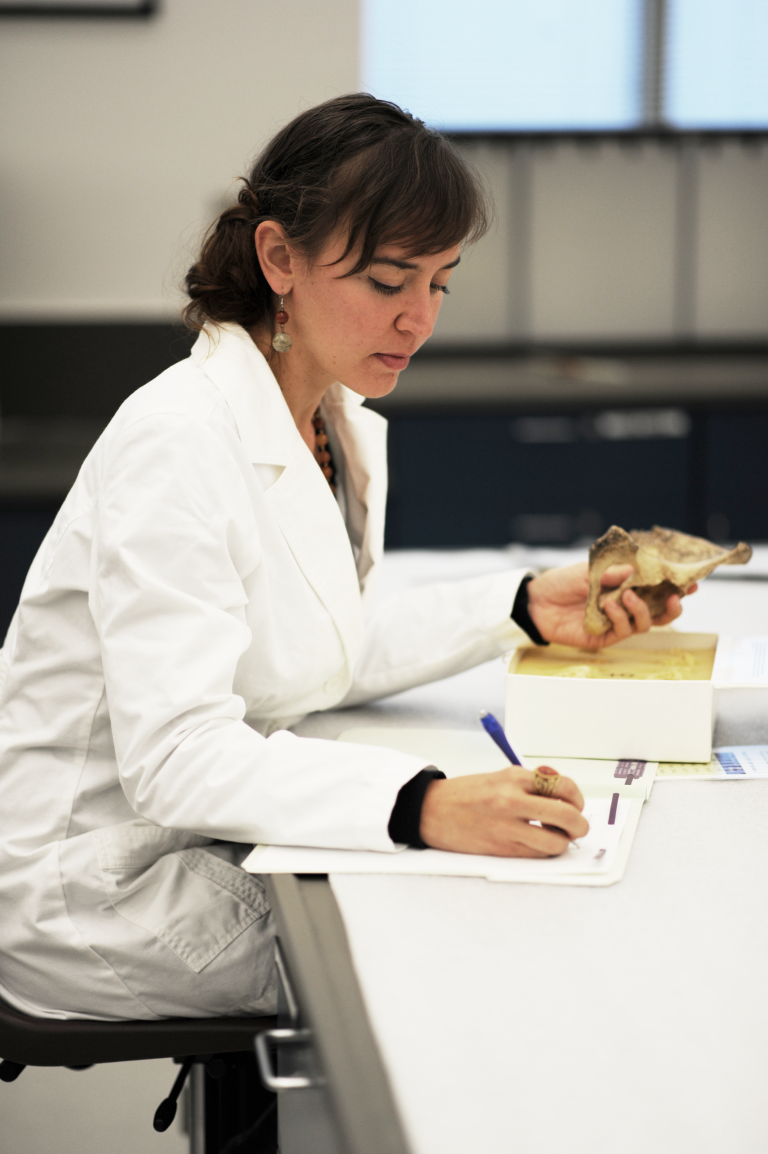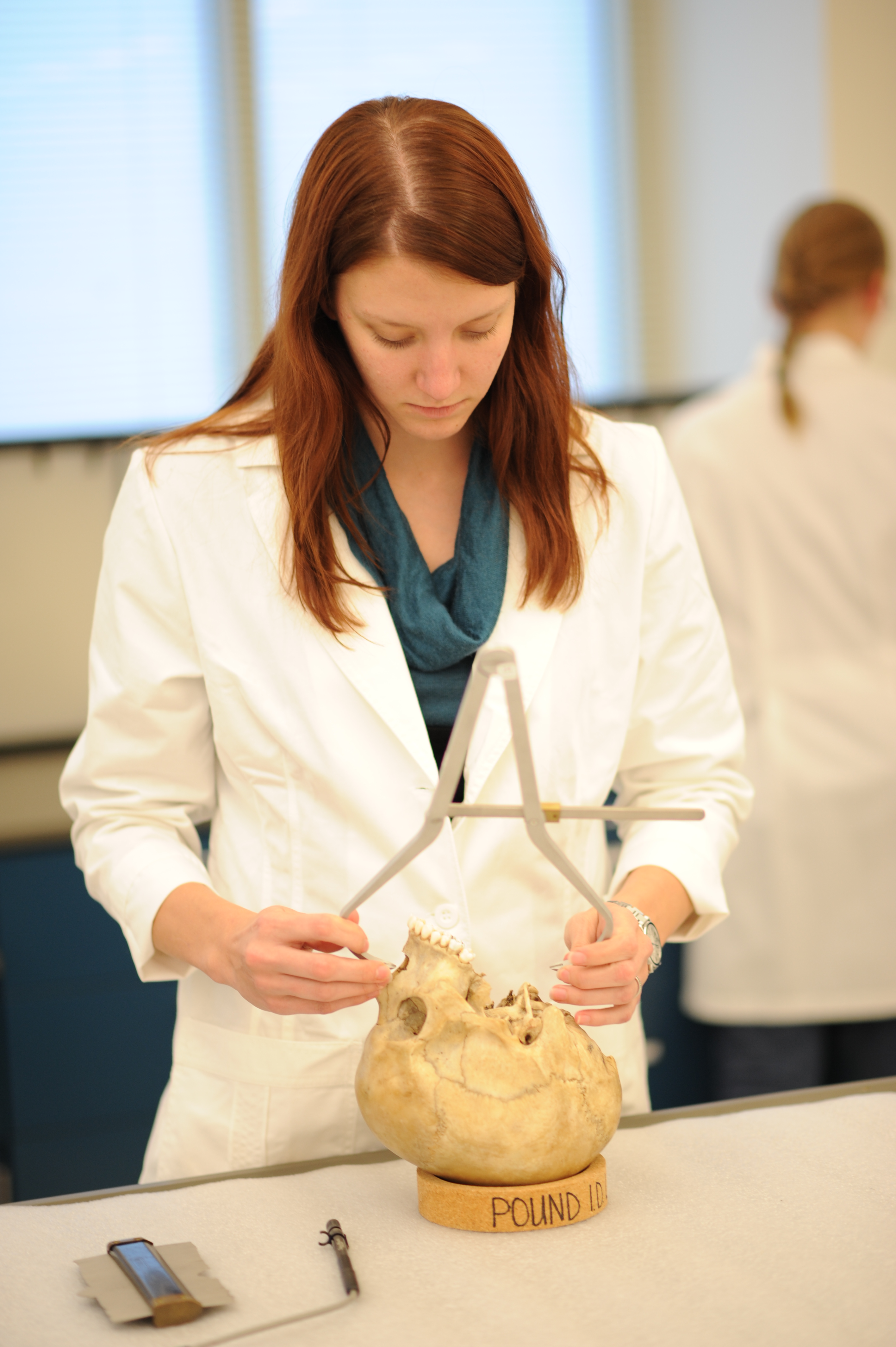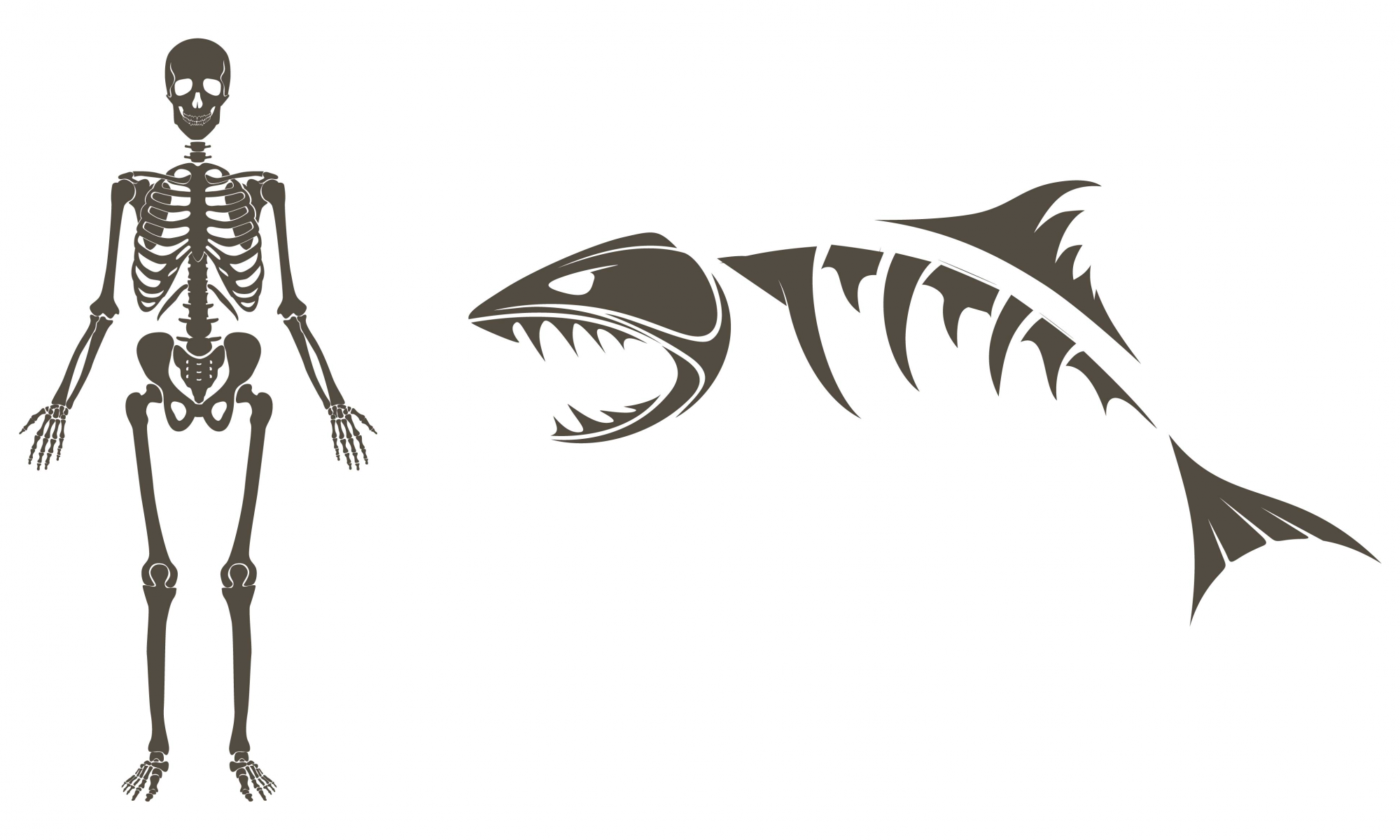Anthropological analysis of shark bites provides a new standard for forensic science.
Although the fear of sharks has persisted for centuries and shows no sign of cessation, a great white is the least of Floridians’ risks in the water. Now, UF forensic anthropologists and the Florida Museum’s shark expert have joined forces to use sharks’ behavior to help forensic scientists determine cause of death for those who perish at sea. A paper (opens in new tab) published in the Journal of Forensic Sciences in May 2017 analyzes six cases in which human remains were recovered from the oceans around Florida.
The C.A. Pound Human Identification Laboratory (opens in new tab) does forensic casework for any agencies and professionals who need the identity and cause of death for human remains. When Allysha Winburn, PhD ’17, and Michala Stock, PhD candidate and alumni fellow, were assigned a case involving a partial skeleton recovered from Florida’s Atlantic Coast, they discovered what appeared to be shark bites on the bones. “I thought, hey, we have a shark specialist here. Let’s call the shark specialist!” recalls Winburn, referring to George Burgess of the Florida Museum of Natural History. Their examination led them to conclude that a bull or tiger shark had likely scavenged on the adrift remains. They applied anthropological analysis to five other cases documented in forensic literature and crafted some guidelines to help investigators and medical examiners determine two things for bodies found in the ocean: Shark attack or no? If shark, predation or scavenging?

“Sharks seem scary, but in the ocean, you’re more likely to die another way.” – Allysha Winburn
“Sharks seem scary, but in the ocean, you’re more likely to die another way,” Winburn says, echoing the sentiment expressed by shark experts everywhere, including Burgess. With each news report of a shark attack, galeophobia (fear of sharks) surges again, while game fishing of sharks and overfishing of their food supply continue to decimate their populations. It’s no surprise that sharks scavenge on human victims of boating accidents; however, most shark species, with the notable exception of tiger sharks, apparently don’t care for the taste.
Winburn, a former bioarchaeologist, is excited about the prospects of the paper. “I hope the findings will be used whenever shark-scavenged remains are found,” she says. Some hallmarks include parallel gouging in the bones with striations that indicate serrated teeth that indicate a marine carnivore (terrestrial ones usually have smooth teeth), compression fractures that indicate a powerful jaw, and torsion patterning that reflect sharks’ twisting form as they bite.
 Michala Stock, Alumni Fellow at the Pound Lab, measures a skull.
Michala Stock, Alumni Fellow at the Pound Lab, measures a skull.
“It feels meaningful to have a very specialized skillset that can be deployed to help people to rest.” – Michala Stock
Both Winburn and Stock are NYU alumni; other than that, their collaboration the nexus of forensic anthropology and shark research was fortuitous. Stock arrived at UF four years ago after completing her Master’s at NYU. A former professional dancer and the daughter of a physician, Stock naturally was intrigued by the human form and how the skeleton shapes physicality. Her dissertation research examines how human sexual dimorphism emerges during childhood development of the skeleton.
Winburn, who arrived at UF seven years ago to switch careers after seeing how forensic anthropologists helped identify Katrina victims, tackles the questions of the aging skeleton from the other end, studying whether physical stress such as intensive exercise exacerbates age-related changes in the hip joint. Her findings suggest that the acetabulum — the pelvis side of the hip joint — is an accurate marker of age.
Together, they’re providing scientific standards for identifying human remains, as part of a relatively small academic community. They are only 400–500 practitioners of forensic anthropology in the United States, explains Winburn. “It’s not glamorous … it’s dirty, thankless and psychologically difficult field,” she says. “So if you have the skillset and mindset to do it — do it.” She points out that many cold-case victims are from minority or marginalized populations. “If we can be the voice for those people, then let’s be the voice for those people,” she says. Stock adds, “It feels meaningful to have a very specialized skillset that can be deployed not only to help people to rest, but to bring information and closure to the people remaining.”
Both are quite familiar with the gravitas of their discipline. After pursuing forensic anthropology, Winburn joined the renewed excavation of the ruins of the World Trade Center in 2007. Eight years later, Stock worked on a later phase of the project. “Every anthropologist and archaeologist from the Tri-State Area was employed to sift through [and identify] those remains,” Winburn says.
The field has been growing thanks to the popularity of Kathy Reichs’ semi-autobiographical novels about forensic anthropologist Temperance Brennan, and her TV counterpart of the same name, nicknamed “Bones.” Winburn is appreciative of pop culture’s portrayal, even if it’s not as glamorous, “if it brings people into the field.” She and Stock are less impressed by the scientific accuracy — or lack thereof — of shark research in recent shark movies. “Sharknado?!” laughs Stock.
Of course, in forensic anthropology, sharks are less the villains and moreso the bystanders — and sometimes, a clue. Thanks in part to Winburn, Stock, and Burgess’ research, the shark standards are being set for forensic science to find out the tooth — er, truth.
